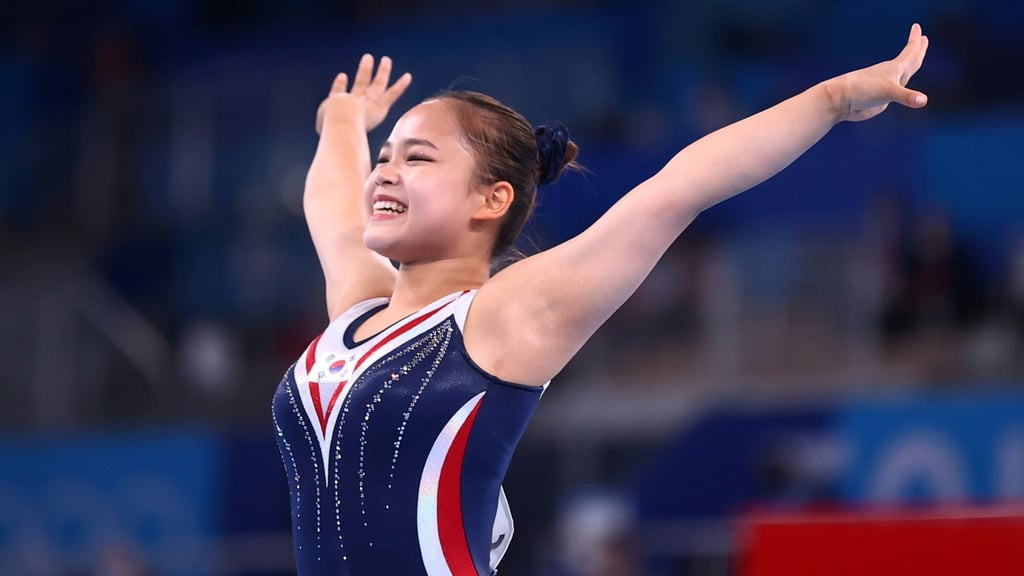The debate around Skimpy Olympic Uniforms for women athletes resurfaces with every Games, highlighting a persistent issue of sexism in sports. While the Olympics aims to celebrate female athletic achievement, the regulations surrounding women’s uniforms often place undue emphasis on aesthetics and sexualization rather than performance and comfort. This is evident across various sports, from beach volleyball to gymnastics, where uniform rules for women often differ significantly from their male counterparts.
In beach volleyball, while it’s suggested that women athletes display their names on their bikini bottoms, practicality takes a back seat to the revealing nature of the attire. Similarly, beach handball regulations mandate bikini bottoms for women with a maximum side width of just 10cm. This measurement is notably smaller than an iPhone, emphasizing the focus on minimizing fabric rather than maximizing athletic function.
 Latvian beach volleyball player Tina Graudina competes in a skimpy Olympic uniform at the Tokyo 2020 Olympics, highlighting the debate around required attire for female athletes.
Latvian beach volleyball player Tina Graudina competes in a skimpy Olympic uniform at the Tokyo 2020 Olympics, highlighting the debate around required attire for female athletes.
Gymnastics, although allowing women to wear unitards, still stipulates that these must be of “elegant design” and feature a “proper” neckline. Such subjective descriptions introduce an element of bias and aesthetic judgment into what should be purely performance-oriented apparel. These examples underscore a recurring theme: the uniforms for women in the Olympics are frequently designed and regulated in ways that prioritize visual appeal, often bordering on sexualization, over athletic functionality.
 South Korean gymnast Yeo Seojeong performs vault at the Tokyo Olympics, showcasing the 'elegant design' requirement for women's gymnastics uniforms, a point of discussion regarding Olympic attire standards.
South Korean gymnast Yeo Seojeong performs vault at the Tokyo Olympics, showcasing the 'elegant design' requirement for women's gymnastics uniforms, a point of discussion regarding Olympic attire standards.
Charlene Weaving, a professor and chair of human kinetics at St. Francis Xavier University, aptly points out the absurdity of these standards: “If there was any kind of advantage to having little fabric, the men would be wearing them too.” She emphasizes that performance wear should be about optimizing athletic capability, not adhering to sexualized norms. The focus on skimpy Olympic uniforms for women, therefore, reflects a deeper cultural issue where female athletes are viewed and judged not solely on their athletic prowess, but also through a lens of outdated and sexist expectations about their appearance. This ingrained bias within sports culture needs to be addressed to ensure that women athletes are respected for their abilities, and their uniforms are designed for performance and comfort, not for outdated aesthetic standards.

